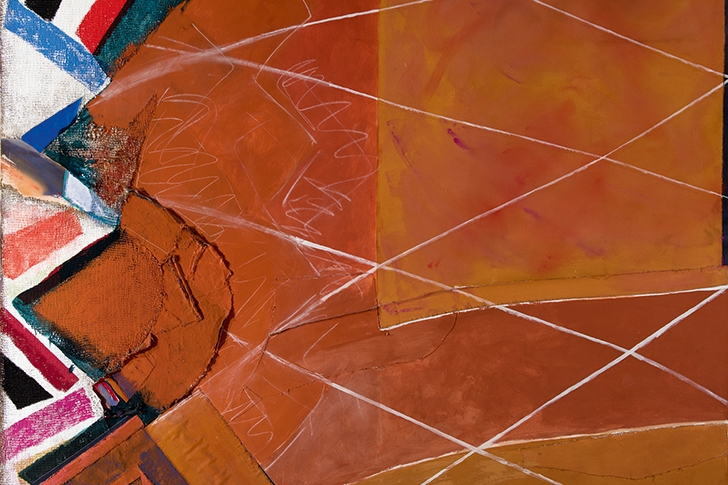In the 1940s Lucian Freud took another young painter, Sandra Blow, up to the top of a bombed church in Soho. There were just two prongs of masonry left and Lucian promptly launched himself through space from one to the other. ‘You can’t possibly expect me to do that,’ she exclaimed. ‘Just think of it as if you were on the escalator in Selfridges,’ he replied. History does not relate whether she was persuaded by this comforting analogy, but as a small exhibition at the Fine Art Society demonstrates, Blow (1925–2006) spent the rest of her career making jumps.
These were mainly of the visual and stylistic variety. There is an exhilarating feeling of rushing through air about ‘Stripes’ (1978), for example. It consists of a set of whooshing diagonals, plummeting down from top left to bottom right of the picture, which intersect with another group of brightly coloured bars on a curving, horizontal trajectory. It looks like one painting superimposed on another, and that — perhaps — is exactly what it is. Because the most unexpected and unusual aspect of ‘Stripes’ is that it is not just an abstract painting, it is also a collage — and a textile collage at that.
One array of stripes seems to have been cut from canvas and stuck across the other. Most of the 11 works on show at the Fine Art Society involve some such glue or stitching — an element that is not so obvious in photographs: you have to see the real thing. Another reason to do so is that several of them, the best in fact, are huge (no good paintings can be judged properly in reproduction, but the bigger they are the worse they come across).








Comments
Join the debate for just £1 a month
Be part of the conversation with other Spectator readers by getting your first three months for £3.
UNLOCK ACCESS Just £1 a monthAlready a subscriber? Log in